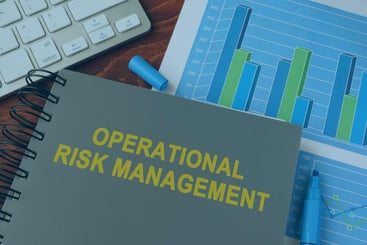Relevant Contents
Need Tailored Business Continuity Insights?
Contact Us Now for Personalized Guidance!
In this post, we’ll outline what an emergency operations center is, why it’s important, how it functions, and where to put it.
An Emergency Operations Center (EOC), sometimes called a “war room” is a physical place where all communications of the recovery effort are focused. It is the known place where all interested parties can report on the status of a recovery. It provides communication to stakeholders such as executives, general public, suppliers, and customers that are most likely external to the recovery process. It also provides administrative support to the recovery effort, such as public relations, safety, purchasing, and site security.
Because there is not usually time or availability to announce where the Emergency Operations Center will be after disaster strikes, it is crucial for it to be “a known place” ahead of time. It should be a logical place where people would turn for information and/or assistance. A few options include the facilities security office, if available, or the data center’s help desk. The Emergency Operations Center has three essential functions:
- Command & Control – This is where you will find the person in charge of the containment and recovery efforts. They will set objectives and priorities and have overall responsibility at the incident.
- Operational Control – An hour-by-hour control should be exercised from here by various functional areas including security, HR, purchasing, communications, logistics, etc.
- Recovery Planning – (separate from emergency containment) will begin at the EOC but quickly transfer to its own office.
Where to Locate an Emergency Operations Center
The Emergency Operations Center (EOC) should be located as close to the problem site that is safe. If you were aware of where and when a disaster would strike, you would take steps to prevent it. Therefore, unless you’re the cause of the problem, you don’t know where it will be. When establishing an EOC, evaluate possible sites based on a few criteria. Because very few companies can afford to leave a fully equipped room sitting idle until needed, most companies convert an existing facility to an EOC when needed. Often times, with a bit of rearranging and some additions, a room that is already wired for data and equipped with computers can turn into an EOC.
A typical center is between 500 and 2000 square feet and should have a large closet to hold supplies for set up. It should also be close to a building exit. It must be easily accessible by road and have ready access to delivery services, food service, and hotels. Other things to keep in mind when setting up an EOC is the power source and telephone company. These should both be serviced by different companies than the central office. This way, your primary EOC can become a back-up EOC if you have another facility in a nearby city or town.
A few options for EOC are a personal computer training room, a large conference room with wiring, or a hotel wired for PC training that has sufficient outbound telecommunications capacity.
A note on using a backup EOC to control recovery operations: expect to relocate closer to the disaster site within 48 hours, as it will quickly become unwieldy to control operations from a distance. However, for the first few hours, even a remote facility will be extremely valuable.
Need more help? FEMA has a handy checklist for assessing your emergency operations center.

Michael Herrera
Michael Herrera is the Chief Executive Officer (CEO) of MHA. In his role, Michael provides global leadership to the entire set of industry practices and horizontal capabilities within MHA. Under his leadership, MHA has become a leading provider of Business Continuity and Disaster Recovery services to organizations on a global level. He is also the founder of BCMMETRICS, a leading cloud based tool designed to assess business continuity compliance and residual risk. Michael is a well-known and sought after speaker on Business Continuity issues at local and national contingency planner chapter meetings and conferences. Prior to founding MHA, he was a Regional VP for Bank of America, where he was responsible for Business Continuity across the southwest region.


